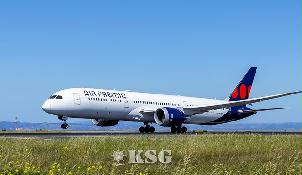2023-03-07 08:56
Global Political Situation Impacts Port of Hamburg Annual Results

In 2022, international crises impacted the Port of Hamburg’s seaborne cargo throughput. Hamburg terminals handled 119.9 million tons, or 6.8 percent less than in the previous year. With growth of 11.2 percent to 1.4 million tons, the trend for conventional general cargo was positive. Yet handling of general cargo was 5.8 percent down at 83.7 million tons. At 36.2 million tons, throughput of bulk cargoes in the port was 8.9 percent lower.
“The war in Ukraine plus the related sanctions against Russia, along with worldwide supply chain problems caused by the corona pandemic, impacted Port of Hamburg throughput during the year. This was compounded by labour disputes in the port at the beginning of the second half of the year and very high inflation in the course of the autumn, which caused consumer spending to fall to a low point,” explained Axel Mattern, Port of Hamburg Marketing’s CEO. Lower volumes of bulk cargo are both directly and indirectly attributable to stiffer sanctions against Russia. Falls occurred in both suction cargo - down 6.0 percent at 6.0 million tons and grab cargo - 6.3 percent lower at 20.2 million tons - as well as liquid cargo - down 15.2 percent at 10.0 million tons.
Whilst taking downturns last year in bulk cargo handling, the Port of Hamburg is in the process of preparing for new products and volumes. Its transformation into a cutting-edge energy hub has already commenced. “In February 2022 we signed an agreement with Air Products, the world’s largest hydrogen producer, providing for exploration of the opportunities for building up a comprehensive hydrogen added value chain throughout the Port of Hamburg. In November, Air Products and Mabanaft announced that Germany‘s first large import terminal for green hydrogen would be built on Oiltanking Deutschland’s site in the port.
With this, the Port of Hamburg will be playing a pioneering role in hydrogen imports and helping ensure supplies for Germany,” said Friedrich Stuhrmann, CCO of der HPA - Hamburg Port Authority. By constructing shore power supply units at both cruise and container terminals, HPA will be well on the way to becoming a climate-neutral port, added Stuhrmann.
A total of 8.3 million TEU - Twenty-foot Equivalent Units - crossed quay walls in the Port of Hamburg last year, or 5.1 percent fewer than in the previous year. A quarterly comparison reveals a positive trend in the first half. Down by 12.3 percent, throughput fell steeply in the fourth quarter, however. “With Christmas coming, in the final quarter we should normally see a rise in throughput totals. That failed to happen last year. The main reasons were high energy costs and inventories in industry,” explained Mattern. At 4.2 million, seaborne container imports were consequently 6.1 percent lower. For comparison, 4.1 million TEU were exported, a 4.1 percent fall on the previous year.
< Korea Shipping Gazette >
많이 본 기사
- ‘가스공사 전용선 30% 점유’ 현대LNG해운 해외매각 시끌‘고환율·저운임’ 글로벌 물류기업 일제히 부진한 실적 신고국제물류업계, 광양항 마지막 배후단지 활용법 모색한다‘일상이 된 물류시장 불확실성’, AI·친환경이 돌파구한국해양대, 장금상선등 해운사와 해양인재 양성방안 모색DHL, 중동 두바이에 차세대 물류허브 개소해운협회, 부산항도선사회와 CCTV 활용 안전도선 업무협약‘수요 둔화 지속’ 컨운임지수 한주만에 1300선으로 후퇴KMI, 우리나라와 북극권국가 협력 방안 모색우수물류기업 인증 체감효과 낮아 “인센티브 확대 필요”
- 2026 글로벌 공급망 전망과 한국 물류산업의 전략적 대응2028년 유엔 해양총회 한국 유치 확정벌크선시장, 급등 이후 조정 '속도 조절 들어가나'전재수 해수부 장관 사의…“해양수도권 차질없이 육성되길”日 ONE 운항 9100TEU급 컨선 화재…공동해손 선언인사/ 팬오션해양과학기술원, 日과 친환경 연안공간 만들기 '맞손'쿠팡 박대준 대표이사 사임…“개인정보 유출 책임 통감”에스티엘글로벌, 한국해大 해사대학에 장학금 기부윌로그, 벤처창업진흥유공 대통령 표창 수상































































0/250
확인